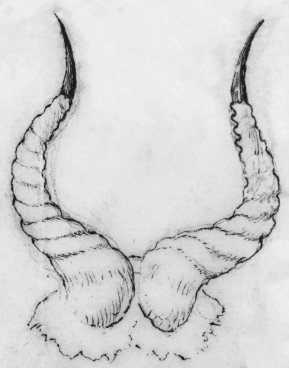To Thomas Jefferson from William Bartram, [before 29 April 1805]
From William Bartram
[before 29 Apr. 1805]
| Sketch of the |

|
| N 1. | Horns of The Antilope as they stood upon a part of the Frontal bone of the Cranium when we recieved them, but have since parted from each other, & may be reunited. They were mutilated when we recieved them, in the manner they now appear. One horn is yet intire & perfect in figure. |
| No. 2. | The other is a single horn of a species of Cervi from Ter de Labrador, or Hudsons Bay. they are small & remarkeble in being so flat & thin. This horn is also mutilated, the Rats having eat off the points of the Antler. We have added a few other articles to fill the Box. |
| No. 3. | appears to be a species of Chama—petrifyed, it was found in lower Jersey. many feet under the surface of the Earth in a heteroginous stratum, of Sea-Shells of various Genera and species* combined & cemented, into vast ponderous masses, with other recrements of the Ocean, together with Alumenous vitriolie, & ferraginous concretes |
| 4 | Phytolithus ligni, a piece of Petrifyed Wood said to be Holly, found on the Banks of Cape Fear River where I have seen large Trees in this state of transmutation |
| 5 | Zoophyta corallina. *of the great variety of sea-shells & other lestacious rermi composing these masses, few appear’d to be of the same sorts now found on our Sea coasts, and dont exist, unless in so great depth of water as to elude our reserches |
Wm. Bartram
RC (DLC: TJ Papers, 155:27163-4); undated; addressed: “His Excelly. Thomas Jefferson President United States”; endorsed by TJ: “Natural History.”
Horns of The Antilope: Bartram offered TJ these specimens in his letter of 18 Mch. This letter likely accompanied the box that John Vaughan mentioned in his 29 Apr. letter to TJ.
Chama: a genus of bivalve mollusks ().

![University of Virginia Press [link will open in a new window] University of Virginia Press](/lib/media/rotunda-white-on-blue.png)
